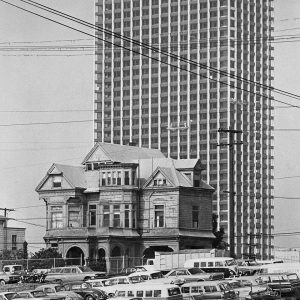PRESERVATION OF CULTURE THROUGH THE RESTORATION OF HISTORIC HOMES

Is the restoration of historic buildings and homes important to the preservation of our
culture? While considering this question, think back on the last road trip you took.
Recall the homogenization of the American landscape you witnessed. Towns that were
once unique in character and personality all look more or less the same, each now with
strip malls housing a Best Buy, Starbucks, McDonalds and Olive Garden. We’ve all
cringed, while watching the McMansions being built on tiny lots in the new subdivision
up the street. When and why did this trend start?

Urban Renewal: 1950s-1980s
Starting in the early 1950s, older homes were being torn down to build new housing
developments. This was a government-created program called urban renewal, and in
1949, a new Federal government department was created called the Department of
Housing and Urban Development, otherwise known as HUD. The goal was to improve
the health and safety of declining urban areas, and with public funds, HUD seized and
demolished large swaths of private and public property, modernizing and improving
aging infrastructure. HUD has remained a controversial effort, and in fact, many
consider it a failure. Here are but a few reasons why:
• Urban renewal destroyed Black middle-class neighborhoods, displacing them and
causing mass migration out of cities.
• Ultimately raised housing costs.
• Caused the erasure of historic districts, losing the community culture.
Just as this effort was starting, a builder named Abraham Levitt developed the first
cookie-cutter neighborhood. On a 1000-acre plot of land on Long Island, he built
identical homes, intended to house white war veterans. With the housing shortage and
the baby boom, this style of home construction exploded. Because the home designs
were the same with little variation, these builds were affordable. The builders could
order materials in bulk and mass produce the parts.
Levitt and Sons remained strong until the 2007 recession, when, as home construction
in general took a nosedive, they had to declare bankruptcy.
The popularity of the cookie-cutter concept of living was starting to fade as well,
and pop culture began to portray the darker side of suburbia.
Today the policy of urban renewal has evolved into less destruction, more renovation
and investment.
Why should you restore your historical home?
Here are some great reasons why you can feel confident bringing your lovely old home
back to its original glory:
• Helps communities maintain their link to the past, learning from what came before. By
strengthening the unique cultural and architectural elements of an historic home, we
create a sense of identity.
• Helps maintain neighborhood character and personality, infusing a sense of belonging
and caring for.
• More environmentally friendly compared to a new build. While not wasting materials,
you can rehabilitate an existing structure to make it eco-friendlier and more durable.
• Limits other environmental factors, like urban sprawl, traffic and environmental
degradation.
• You can return your historic home to its original look while still making it more energy
efficient and increasing its value.
We here at RWT have experience in home restoration and LOVE bringing older homes
back to their original beauty!


No Comments